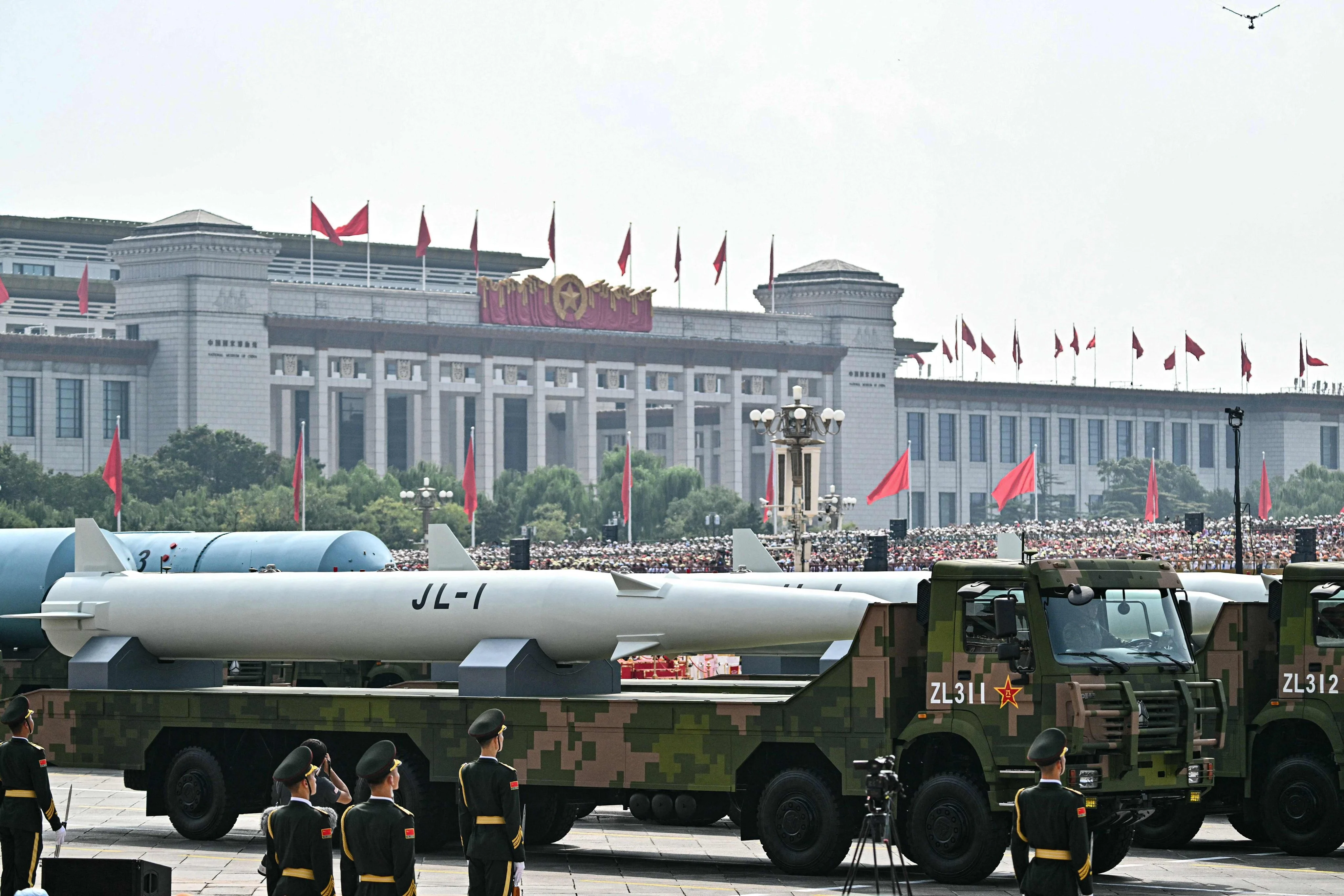By Amber Wang
Copyright scmp

The debut of the Jinglei-1 (JL-1) long-range missile means China has a complete air, sea and land nuclear deterrent, one that will improve with the next generation of strategic bombers, according to analysts.
The JL-1 is a nuclear-capable air-launched ballistic missile (ALBM) and debuted during Beijing’s military parade last week.
It appeared alongside land-based intercontinental ballistic missiles (ICBMs) and submarine-launched ballistic missiles (SLBMs) – the first time that China has publicly displayed a full nuclear triad.
With a range of up to 8,000km (5,000 miles), the JL-1 can move at hypersonic speed and with terminal manoeuvrability, giving it strong penetration abilities and making it difficult to intercept, according to Chinese state media reports.
The JL-1 can be carried on a modified H-6N strategic bomber, which can be refuelled in the air, extending the aircraft’s operational range, according to experts.
Joseph Rodgers, deputy director of the CSIS Project on Nuclear Issues, said China retrofitted the H-6 bomber in 2019 so it could carry an ALBM, a decision that was probably taken to “enhance the survivability of China’s nuclear deterrent”.
“In the event of a crisis, the JL-1 ALBM can be uploaded onto the H-6N bomber. Once airborne, the air leg of China’s triad provides resilience against disarming first strikes,” Rodgers said.
“The JL-1 ALBM will likely be a feature of China’s strategic forces for a long time.”
Under its “no first use” nuclear strike policy, China says it would only consider using nuclear weapons in response to a nuclear attack by an adversary.
“Because of this, enhancing survivability is essential to China’s nuclear force posture,” Rodgers said, adding that many strategic thinkers in the United States believed that China might consider using a nuclear weapon against US military forces in a Taiwan crisis.
The US and Russia also have nuclear weapons that they can launch from the air but they have bigger, more capable strategic bombers armed with nuclear cruise missiles and gravity bombs. The bombers are understood to have longer range, higher payloads and better stealth capacities compared to China’s H-6 series.
Zhao Tong, a senior fellow with the Carnegie Endowment for International Peace, said China’s ALBMs were simply too large and heavy for widespread operational deployment.
“Even the country’s next-generation strategic bomber may be unable to carry multiple such missiles on each aircraft,” Zhao said.
Nevertheless, he said, the JL-1 gave China an alternative nuclear delivery option that could further complicate an adversary’s missile defences, and improved “China’s ability to signal nuclear intent”.
“Nuclear-armed bombers serve as a visible and deliberate signal of impending nuclear attack without crossing the threshold of nuclear use. This posture maximises psychological pressure on adversaries while buying time for them to reconsider and make concessions in the face of such a threat,” Zhao said.
“As a result, ALBMs would give China a powerful tool to manipulate nuclear threats during crises.”
Other analysts suggested that the major limitation was the aircraft rather than the missile, making the H-6N/JL-1 combination a stopgap until China fielded the H-20.
Timothy Heath, a senior international defence researcher at the US-based Rand Corporation think tank, said the H-6N/JL-1 appeared to be a capable weapon but a transitional one.
“The H-6N is likely to be a temporary solution until the [People’s Liberation Army] fields the H-20 stealth bomber, which will likely assume the air part of the nuclear triad as a core responsibility,” Heath said.
The H-6 series has been in service for roughly 70 years and the H-6N has an estimated range of 6000km, with a strike radius that could theoretically cover Hawaii, or even part of the west coast of North America if it refuelled in the air.
But in practice, it is easily detected and vulnerable to the modern air defence system, as it could not travel the distance without being intercepted, according to Chinese military magazine Ordnance Industry Science Technology.
The H-20, officially confirmed as a “new generation of long-range bomber” in 2016, represents Beijing’s bid to match the US B-2 Spirit and B-21 Raider bombers.
US defence assessments suggest the H-20 may not debut until the 2030s.
Chinese Lieutenant General Wang Wei, deputy commander of the PLA Air Force, said in March last year that bomber would be revealed “soon”, adding its development “has no bottlenecks”.
Chinese military analyst Song Zhongping said China’s air-based nuclear deterrent would have greater penetration when the H-20 and longer-range, more precise missiles, came on stream.
“In the future, the new strategic bomber paired with Jinglei missiles will achieve intercontinental strike capability. The Jinglei series will not only include the current JL-1, but also longer-range variants,” Song said.
Lu Li-shih, a retired Taiwan Navy captain, suggested that the JL-1 could potentially be launched from a Y-20 transport aircraft.



